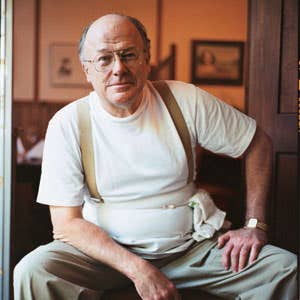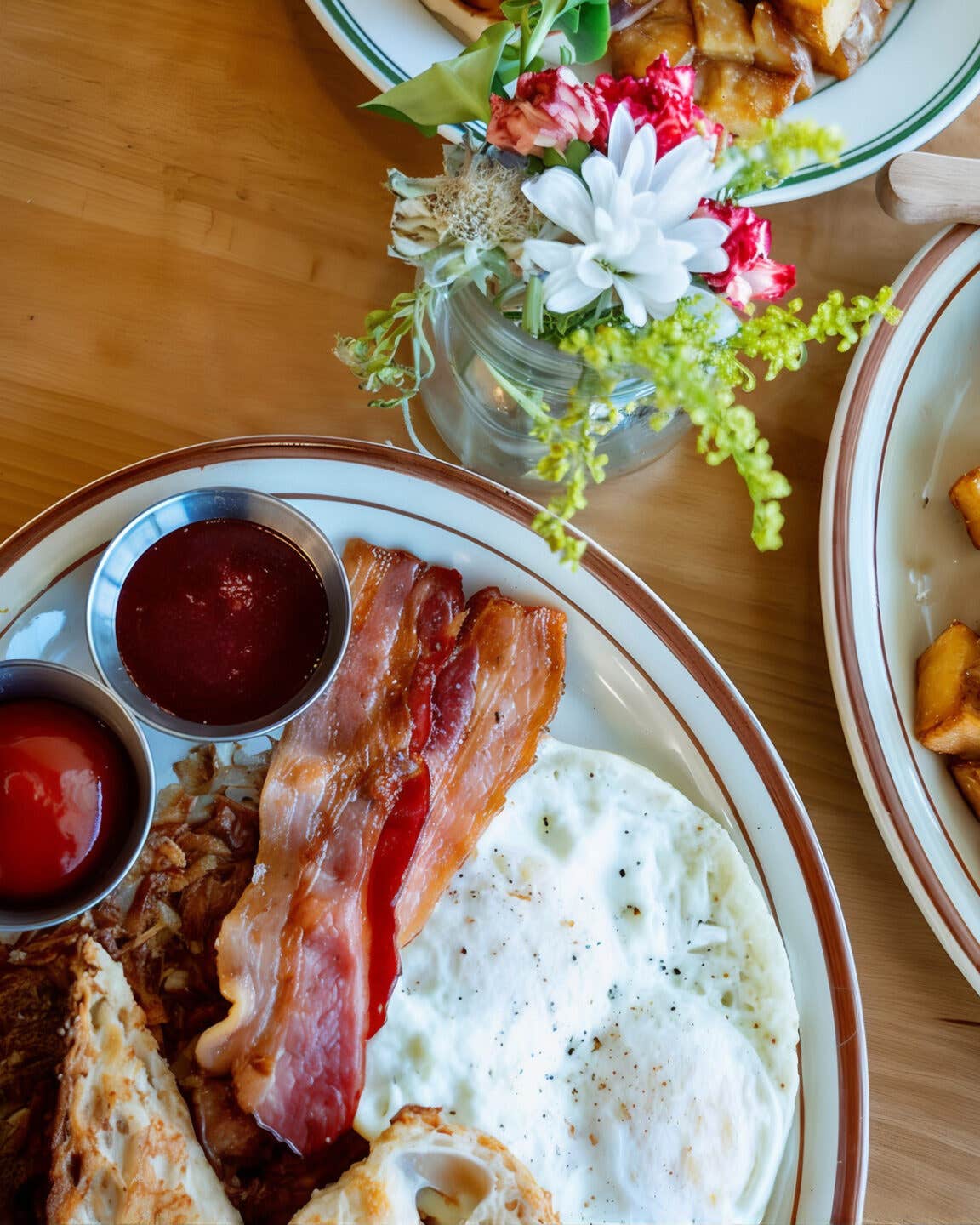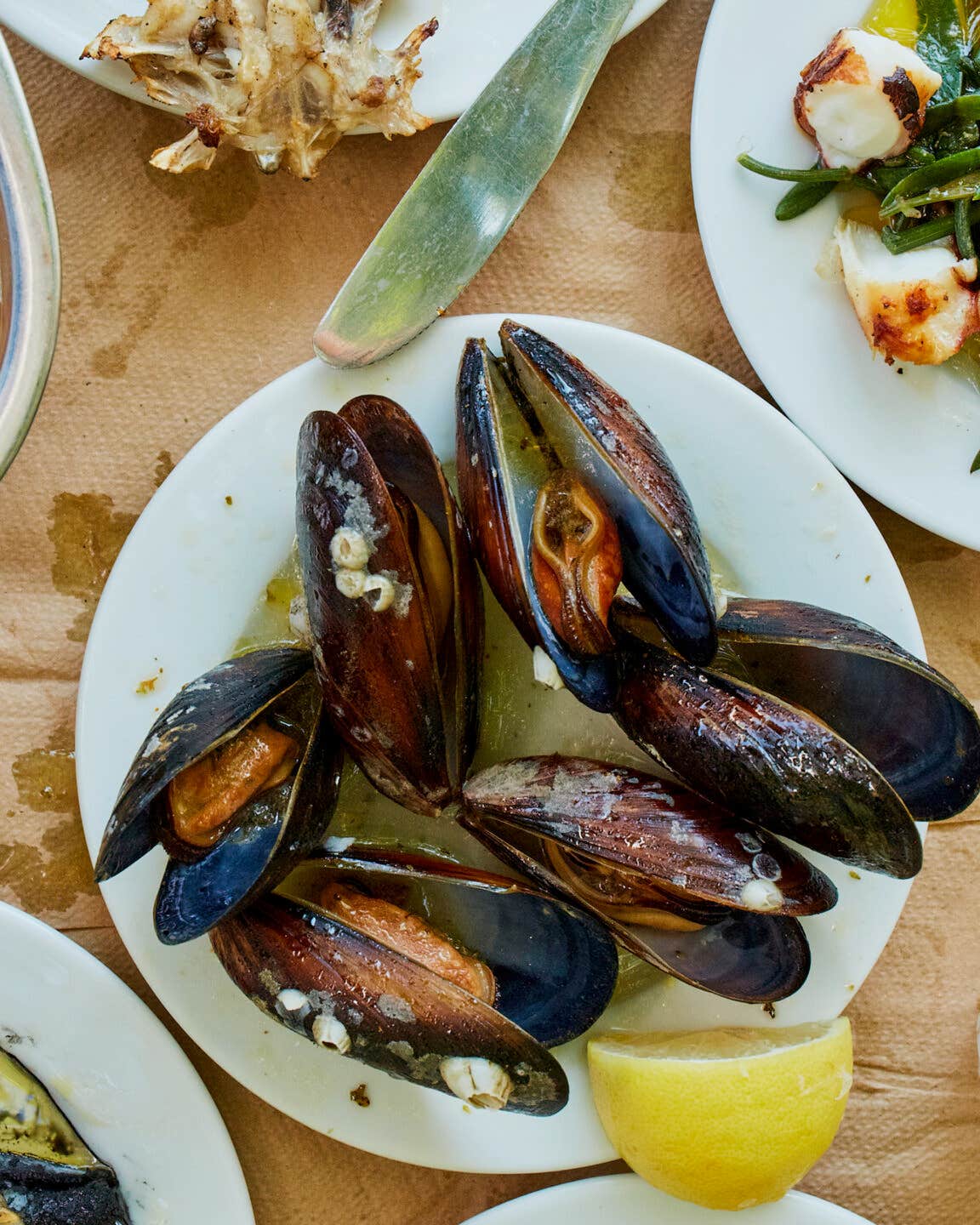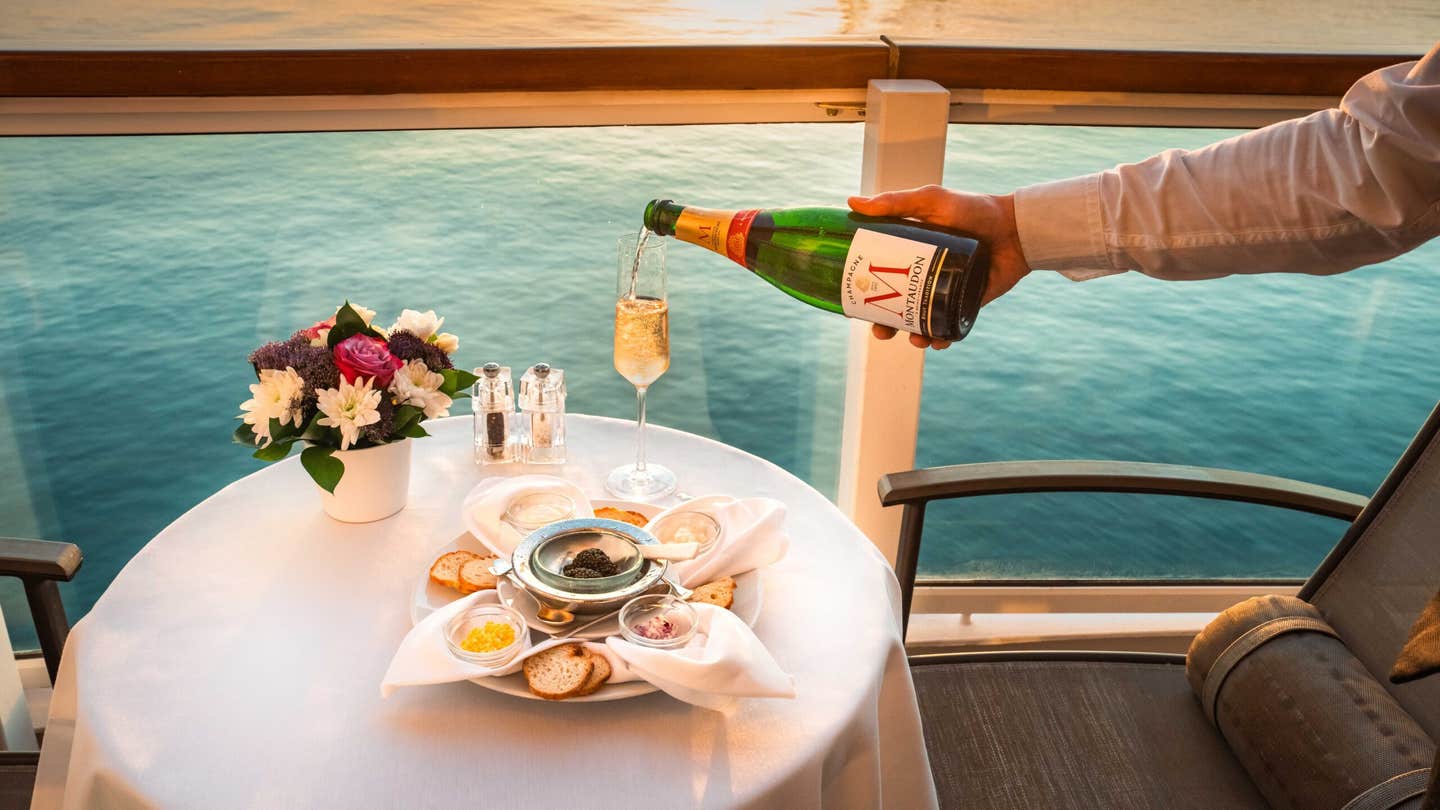
Nick Peirano Feeds the Oregon Wine Country
The second amazing thing is that he didn't even know they were there. The first amazing thing is that, in 1977, Nick Peirano, a kid from the Oakland side of San Francisco Bay with a degree in political science and no professional kitchen experience, having heard about a space for rent in Oregon, decided to open a serious Italian restaurant in McMinnville, a farming community and county seat where the dining choices ran to Chinese-American and Dairy Queen. It took him a while to get a liquor license; he later was told it was because he had an Italian name, and everybody knew what that meant.
He opened the restaurant, he says, because he had no clue as to what he was doing. But he also had no idea that in the surrounding hills there existed a muddy cadre of entrepreneurs who had an idea as far-fetched as his—that rainy Oregon could produce world-class wine. "I didn't know it was happening," says Peirano about the now flourishing local wine industry. "But I know the restaurant wouldn't be around today if those folks hadn't been here."
He's explaining this in the front dining room of Nick's Italian Cafe, surrounded by some of those same folks, winemakers whose bottles are all over the world these days—David and Diana Lett from Eyrie, Dick Erath from Erath, Myron Redford and Vikki Wetle from Amity, and Dick and Nancy Ponzi from Ponzi. When, in 1979, Eyrie's 1975 South Block Reserve Pinot Noir took third place among a selection of top burgundies in a blind tasting held in Paris, Oregon wines were suddenly no longer a punch line. Consequently, these pioneer vintners have seen the dozen Oregon wineries of the '70s multiply to more than 200 over the past quarter century or so. And they are here at Nick's this afternoon to celebrate the place that has been like a second home for much of the local wine community during that time.
To mark the occasion, they have brought bottles from those early years, bottles now nearly impossible to find—except maybe at Nick's, where the wine cellar could qualify as a historic site. The wine list at Nick's does not discriminate; it admits bottles from France, Italy, and California. But more than two-thirds of the 200-plus entries are from Oregon—ranging from the first bottlings of a new hundred-barrel winery to gems from the mid-1970s currently priced at $500.
Nick Peirano doesn't necessarily come across like a wine maven or the proprietor of a highly regarded Italian restaurant whose hazelnut and pesto lasagne and salt-grilled salmon attract diners from the Bay Area as well as Burgundy. At 60, he's bald, rounding, and seemingly imperturbable, and he tends to wander his kitchen in an undershirt and suspenders. His view of what he does is not romantic. "People ask me, 'What do I need to know to start a restaurant?' and I say, 'You have to be able to stand up for 16 hours a day.'"
That was his one qualification, Peirano concedes, when he moved to McMinnville with the need for a job and a few of his grandmother's recipes, which his family had brought with them when they left their village near Genoa in 1850 to seek their fortune in California's gold rush. Shortly after the restaurant opened, Peirano's parents moved to McMinnville to help their only son. They taught him to perfect such beloved family dishes as pork, spinach, and cheese ravioli, built of a handmade pasta so thin and satiny that you can see the filling through it. Their help was indispensable, but Peirano considers another factor key to his success: "It was listening to people, listening to what they said about the food. I was flexible. Once I started, the place had a life of its own, and I wasn't so much leading it as riding it."
These days, there are lots of places worth eating at both in and around McMinnville, whose main street is adorned with dozens of banners, each listing the name of a different winery and the slogan "Heart of the Oregon Wine Country". But when Nick's opened, it was the best restaurant north of San Francisco, says David Lett, who began planting the country's first pinot gris grapes in Oregon in the 1960s. (He mentions, in a proud aside, that pinot gris is now the second-largest-selling white varietal in the United States.)
Dinner at Nick's has always consisted of five courses, beginning with an appetizer like seared prosciutto-wrapped asparagus with a balsamic reduction or steamed manila clams with a dijon-caper sauce. His grandmother's gutsy minestrone—packed with carrots, celery, onions, and garlic and topped with a dollop of pesto—comes next; then a salad. These are followed by the day's pasta and a choice of three entrees (pork chops with a fennel cream sauce is a perennial best-seller). Dessert, for those who can manage, is additional. (His signature sweet is a torte that his mother learned how to make from Diana Lett. Composed of hazelnuts and cookie pieces bound in dense dark chocolate with a strong brandy undertone, it is something like a Belgian chocolatier's take on a Twix bar.)
But much as people love the food, Nick's has always been about more than what's on the plate. "This place was the mother of all grapevines," says Dick Erath, who started out here in 1967. The remark garners nods all around the table. Before Nick's, these winemakers didn't really have a place to sell their wines. Then, suddenly, there was a place that not only was more than happy to buy them but that had an owner who might call you at home to say that somebody had just tried one of your bottles and would really like to meet you. (In the early days, at least, the winemakers would scoot on down.) And before Nick's, adds Diana Lett, there wasn't a restaurant to take visiting wine buyers to: "We all would be cooking at home. After Nick's, I didn't do that anymore."
It was also a place where these neophyte winemakers, most of whom had left careers as urban professionals, could gather and talk about non-wine-related topics, like politics and literature. They'd gotten into the business, remembers Nancy Ponzi, whose winery is now in its second generation, out of "a desire to do something good, of value". Asked how they ended up being the first people to plant grapes here, she responds rhetorically, "Do you remember the '60s?"
It's not difficult to find winemakers in the Willamette Valley eager to talk about Peirano's contribution to the industry. (Indeed, the idea for McMinnville's world-renowned annual International Pinot Noir Celebration was hatched at Nick's in 1985.) But the industry has also shaped his restaurant, whose low-key interior, with its counter seating and red-brick walls, is as welcoming to pickers straight from the fields as it is to first-time visitors from out of town.
Peirano caters harvest parties and holds special dinners featuring local winemakers, and the style of his food in general is shaped by his loyalty to the main local varietals: pinot noir and pinot gris. He admires the subtlety of the former, especially the way it is made in Oregon, and so created various lasagnes to go with it. "A lot of our lasagnes don't have red sauce," he explains. "They have bechamel or pesto. They allow the wine to shine, and the pinot does what it should do—allow the food to come through. It's not a fistfight." The point is neatly underscored when the group is served Peirano's dungeness crab lasagne with pine nuts and bechamel, accompanied by the legendary '75 Eyrie: the soft, aromatic pinot noir curls around the rich nuts, creamy sauce, and sweet crab.
Peirano calls the state's dry pinot gris a better food wine than most chardonnays. "It's got a lot of complexity," he says. The next course, rabbit braised in pinot gris with garlic, rosemary, and Italian sausage (custom-made locally with a splash of pinot noir tossed in), was devised with this white wine in mind. "To me, braised dishes denote richness, and the acid in the Oregon pinot gris works well with that."
To Peirano, simple connections are at the center of everything. "Cooking is a craft, not an art," he says. "It's fuel for the body and, hopefully, for the spirit. It's like the difference between pottery and fine art. Food should always think of itself as pottery. Architectural food drives me nuts. Food has to recognize it's serving a basic need."
Peirano remains an icon even to the newer Oregon winemakers—but the state's wine industry has grown so much that he can no longer put every bottle on his list, and he admits that he no longer recognizes every winemaker. He also admits that while he will always consider the kitchen his natural habitat, he's spending less time there, though he still insists on making the pasta himself, by hand.
Peirano's daughters, Carmen, 29, and Tomi, 26, who used to help him at Nick's, are now modeling in San Francisco and New York. But he hopes one of them will take over the business at some point. When that happens, he says, he'll just sit in the dining room, drinking wine and talking with his customers—and maybe, if they're lucky, still making the pasta.
Keep Reading
Continue to Next Story










